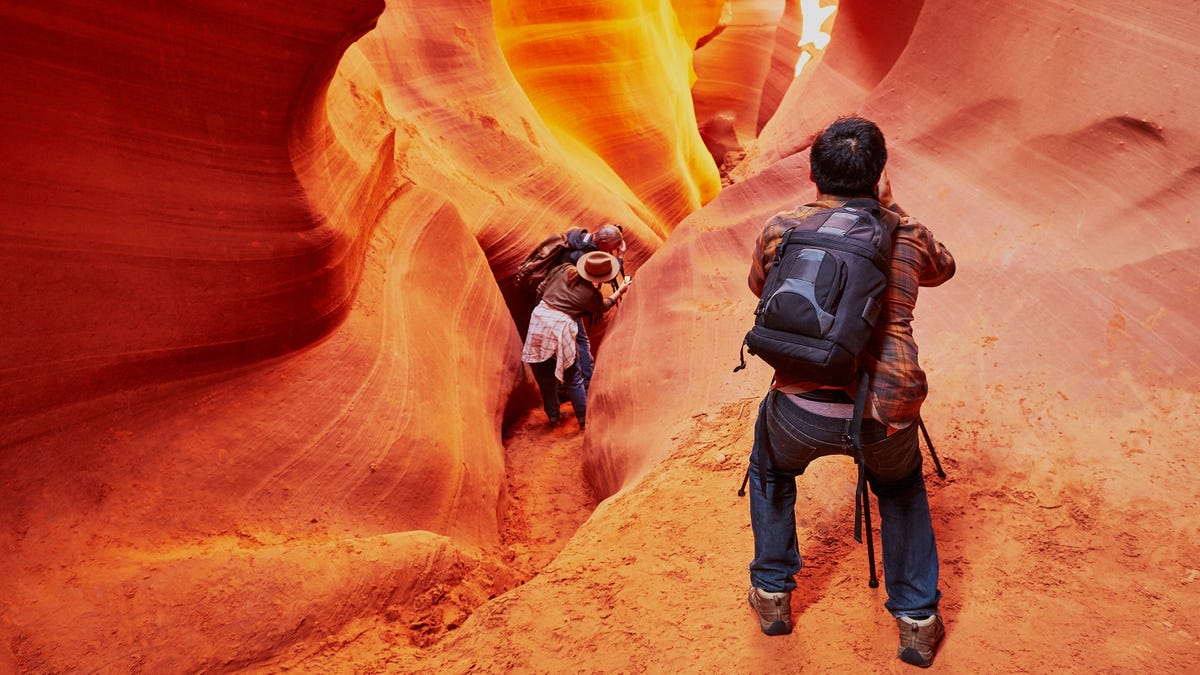Now Is Not the Time to Travel to Indigenous Nations in the U.S. - 3 minutes read
 Photo : Ekaterina Pokrovsky ( Shutterstock )
Photo : Ekaterina Pokrovsky ( Shutterstock )With the COVID-19 pandemic ushering in the return of the road trip, places like parks and other natural wonders have seen a lot of traffic. That includes many popular spots in Indigenous nations within the United States, like Antelope Canyon, Havasu Falls and Glacier National Park.
Advertisement
By now, you probably (hopefully) know to check on state and local travel restrictions when planning a trip. But, in certain parts of the country, it’s also important to check—and follow—the restrictions set by the Indigenous nations in the region. And right now, many are asking us to hold off on visiting their territories because of COVID concerns. Here’s what to know.
Advertisement
What is tribal sovereignty?
If your high school government class glossed (or completely skipped) over the lesson on tribal sovereignty, here’s a quick refresher. According to the National Congress of American Indians, there are 574 federally recognized Indian Nations in the United States.
Approximately 229 of these are in Alaska, with the others spread across 35 other states. Each of these Indigenous nations are sovereign, meaning that they are self-governing and their laws are separate from the state that their territory falls within.
Indigenous nations and COVID-19
Like other communities of color throughout the United States, Indigenous nations have been disproportionately impacted by COVID. But long before the pandemic, systemic health disparities have meant that citizens of Indigenous nations die at higher rates than other Americans in many categories, including chronic liver disease and cirrhosis, diabetes mellitus, unintentional injuries, assault/homicide, intentional self-harm/suicide and chronic lower respiratory diseases.
Advertisement
COVID-19 is no exception, with infection rates among Indigenous nations 3.5 times higher than among white people, including increased numbers of younger people contracting the virus, according to the Centers for Disease Control. To help slow the spread within their communities, Indigenous nations are exercising their sovereignty—in the form of travel restrictions—to protect their own health.
Advertisement
Understanding travel restrictions
If you plan to visit any destinations within Indigenous nations, check their COVID travel rules first. For example, the Navajo Nation Parks and Recreation are currently closed. “Stay home and stay safe,” Louise Tsinijinnie, a media representative for the parks told Fodor’s. “This is so people can come in the future so that we protect the people and our spaces for everyone.”
Advertisement
In some cases, i ndigenous nations’ COVID restrictions can be found on their websites, which is the case for the Blackfeet Nation, Havasupai Tribe and Hopi Tribe. The tourism websites for some states, like Montana, New Mexico and South Dakota, are also helpful resources, providing links to travel restrictions in their Indigenous nations.
Pandemic or not, it’s a good idea to take the time to look into the laws of any Indigenous nations you plan to visit, and be respectful while you’re there.
Source: Lifehacker.com
Powered by NewsAPI.org